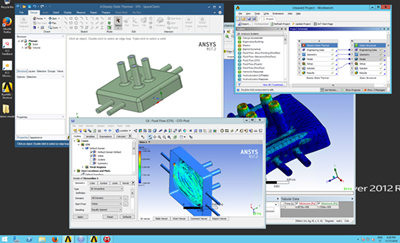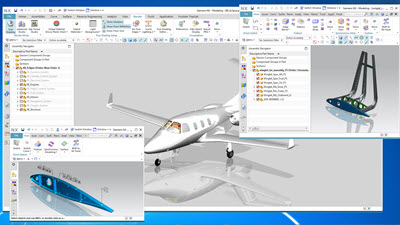AWS News Blog
In the Works – Amazon EC2 Elastic GPUs
I have written about the benefits of GPU-based computing in the past, most recently as part of the launch of the P2 instances with up to 16 GPUs. As I have noted in the past, GPUs offer incredible power and scale, along with the potential to simultaneously decrease your time-to-results and your overall compute costs.
Today I would like to tell you a little bit about a new GPU-based feature that we are working on. You will soon have the ability to add graphics acceleration to existing EC2 instance types. When you use G2 or P2 instances, the instance size determines the number of GPUs. While this works well for many types of applications, we believe that many other applications are now ready to take advantage of a newer and more flexible model.
Amazon EC2 Elastic GPUs
The upcoming Amazon EC2 Elastic GPUs give you the best of both worlds. You can choose the EC2 instance type and size that works best for your application and then indicate that you want to use an Elastic GPU when you launch the instance, and take your pick of four different sizes:
| Name | GPU Memory |
| eg1.medium | 1 GiB |
| eg1.large | 2 GiB |
| eg1.xlarge | 4 GiB |
| eg1.2xlarge | 8 GiB |
Today, you have the ability to set up freshly created EBS volumes when you launch new instances. You’ll be able to do something similar with Elastic GPUs, specifying the desired size during the launch process, with the option to stop, modify, and then start a running instance in order to make a change.
Starting with OpenGL
Our Amazon-optimized OpenGL library will automatically detect and make use of Elastic GPUs. We’ll start out with Windows support for Open GL, and plan to add support for the Amazon Linux AMI and other versions of OpenGL after that. We are also giving consideration to support for other 3D APIs including DirectX and Vulkan (let us know if these would be of interest to you). We will include the Amazon-optimized OpenGL library in upcoming revisions to the existing Microsoft Windows AMI.
OpenGL is great for rendering, but how do you see what’s been rendered? Great question! One option is to use the NICE Desktop Cloud Visualization (acquired earlier this year — Amazon Web Services to Acquire NICE) to stream the rendered content to any HTML5-compatible browser or device. This includes recent versions of Firefox and Chrome, along with all sorts of phones and tablets.
I believe that this unique combination of hardware and software will be a great host for all sorts of 3D visualization and technical computing applications. Two of our customers have already shared some of their feedback with us.
Ray Milhem (VP of Enterprise Solutions & Cloud) at ANSYS told us:
 ANSYS Enterprise Cloud delivers a virtual simulation data center, optimized for AWS. It delivers a rich interactive graphics experience critical to supporting the end-to-end engineering simulation processes that allow our customers to deliver innovative product designs. With Elastic GPU, ANSYS will be able to more easily deliver this experience right-sized to the price and performance needs of our customers. We are certifying ANSYS applications to run on Elastic GPU to enable our customers to innovate more efficiently on the cloud.
ANSYS Enterprise Cloud delivers a virtual simulation data center, optimized for AWS. It delivers a rich interactive graphics experience critical to supporting the end-to-end engineering simulation processes that allow our customers to deliver innovative product designs. With Elastic GPU, ANSYS will be able to more easily deliver this experience right-sized to the price and performance needs of our customers. We are certifying ANSYS applications to run on Elastic GPU to enable our customers to innovate more efficiently on the cloud.
Bob Haubrock (VP of NX Product Management) at Siemens PLM also had some nice things to say:
 Elastic GPU is a game-changer for Computer Aided Design (CAD) in the cloud. With Elastic GPU, our customers can now run Siemens PLM NX on Amazon EC2 with professional-grade graphics, and take advantage of the flexibility, security, and global scale that AWS provides. Siemens PLM is excited to certify NX on the EC2 Elastic GPU platform to help our customers push the boundaries of Design & Engineering innovation.
Elastic GPU is a game-changer for Computer Aided Design (CAD) in the cloud. With Elastic GPU, our customers can now run Siemens PLM NX on Amazon EC2 with professional-grade graphics, and take advantage of the flexibility, security, and global scale that AWS provides. Siemens PLM is excited to certify NX on the EC2 Elastic GPU platform to help our customers push the boundaries of Design & Engineering innovation.
New Certification Program
In order to help software vendors and developers to make sure that their applications take full advantage of Elastic GPUs and our other GPU-based offerings, we are launching the AWS Graphics Certification Program today. This program offers credits and tools that will help to quickly and automatically test applications across the supported matrix of instance and GPU types.
Stay Tuned
As always, I will share additional information just as soon as it becomes available!
— Jeff;